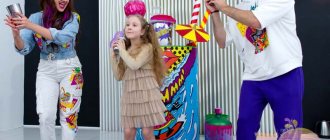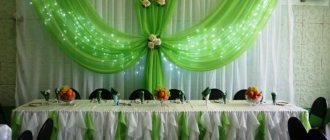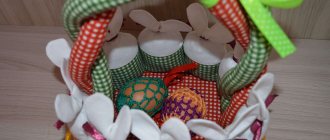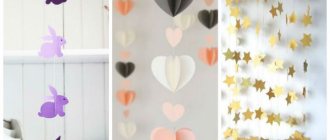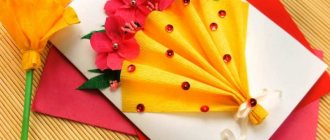First, about what kind of master classes I mean. Sometimes the child’s mother calls and says that the boy has been studying at an art school for 5 years, and now he really wants to master the art collage technique with his friends. I immediately advise you to contact art studios. There, classes are taught by artists who know how to work with this technique and, in a few lessons, will teach a child the basics of such a collage.
Holiday workshops are different. At such an event, children of different ages with different levels of training, temperament and patience gather to complete painstaking work. Such creative activities are held after any activity (quest, laser tag, sports program, game with an animator). Customers most often ask in this way to increase the time of the entertainment program.
In a short time, children manage to make some nice souvenir for themselves or as a gift for loved ones, communicate with each other and with the master in a calm environment, gain skills in working with new materials, and become interested in the proposed type of creativity.
Who will benefit from my advice?
Among the readers of the “Holiday Again” website there are many aspiring organizers of children's events. Of course, success comes with experience; each new holiday will be more spectacular than the previous one. It is best to work as an assistant with experienced craftsmen at the initial stage. I will draw your attention to the main details when preparing an interesting creative activity so that you feel more confident.
My recommendations can be used by active mothers, of whom there are surprisingly many in our country. I often correspond with such people, sometimes the whole evening I am impressed by the fountain of their ideas. When conducting master classes, you need to take into account a few important details, and everything will turn out great.
The tips will also be useful for animators who would like to increase their portfolio of services.
Origami
Paper crafts for children are very common and can be made in various ways. Paper is an affordable material that is easily recycled. Working with paper greatly develops the child, especially tactile sensations - the roughness of the paper, its texture.
Fine motor skills and, of course, the baby’s imagination also develop. When working with paper, scissors, glue, paints, pencils, and other various materials are used.
One of the very first works of a child is paper appliqué, which is done in the younger groups of kindergarten. To do this, use your imagination - you can make flowers, animals, fairy-tale characters and much more.
Creative master class - part of the holiday
Yes exactly. Creating crafts separately from the entertainment program is very rarely ordered from us, since this is precisely an addition to the holiday, and not its main part. At what point in the script you insert the master class is not so important.
This can be at the very beginning, while guests are gathering. A good way to meet and make friends (children are often friends with the birthday boy, but do not know each other), it is easy to fit into the theme of the holiday, and to make some props for a further entertainment program. For example, you can paint wooden keys, which then participate in the quest. Make a print on bandanas in which you can go on a pirate adventure.
The master class can be held in the middle of the holiday. For example, our little princesses decorate crowns or masks with beads and lace, which they then wear to the ball.
There is no need to conduct a quiet creative activity immediately after a wild play program. Let the children just rest, calm down emotionally, eat and talk to each other. After 20-30 minutes they can already be captivated by creating a beautiful craft. Children take the finished product home, so it is important to create an attractive souvenir, magnet, box, original panel, etc. Something that will remind children of the past holiday for a long time.
Formats: streaming or educational
Everything is simple here. If you have 5-10 guests, you can give a lot of attention to each child. In 30-60 minutes, under the guidance of a master, children manage to make interesting drawings on T-shirts, create unusual florariums, decorate wooden objects using the decoupage technique, etc. Let's call it a training master class, since over a long period of time you can really learn something new. For example, master a glue gun.
If a grand holiday is planned for the children of company employees, to which more than 100 people from 2 to 14 years old are invited, the educational format is not suitable. In this case, several tables for the masters and 4-5 chairs for the participants of the event are placed in one area. Children will have a choice of what to do in a festive mood: paint gingerbread cookies, make bouquets, draw with a 3D pen, glue a polygonal mask, make a magnet out of felt, twist figures from balls, etc.
In this case, the craft takes 8-12 minutes, and a seat at the table is freed up for a new participant. With a streaming format, all 100 participants can take part in 3-4 simple master classes in 30-40 minutes.
Thematic master class
What makes an activity themed?
- image of the presenter
- workplace design
- an introductory word from the master and a demonstration of finished works in one topic
- selection of consumables
- packaging of finished crafts
For example, gingerbread cookies can be of any shape. Prepare gingerbread in the shape of dinosaurs for painting - and this is a beautiful continuation of the Lost World holiday. Gingerbread snowflakes and Christmas trees are a hit at any New Year's holiday. Even simple round gingerbread cookies are planets in the space program, apples in the fairy tale about the Swan Geese, edible coins in the game Fort Boyard. It all depends on the presentation.
This is how thematic drawings on rice paper for blending, wooden blanks for painting, themes for decorating bags, and materials for making souvenirs are selected.
Often masters conduct classes in costumes. Well, it’s nice to make pies with Little Red Riding Hood, make handmade soap with “frozen” figures in the presence of the Snow Queen, and paint New Year’s clocks with the Snow Maiden.
Table decoration can also be themed. Painting dishes at an autumn festival surrounded by bouquets of red and yellow leaves is simply a fairy tale. Everything should be beautiful and harmonious: your appearance, voice, communication style, selection of tools and materials, effective packaging of the finished souvenir.
Crafts made from natural materials
Chestnuts, cones, acorns and much more are great as a base for crafts. From natural materials you can create an interesting composition, make a bouquet, applique or various figures.
The cone is great for making various animals, it depends on the size and shape of the cone. Natural materials include fruits and vegetables, from which you can also make many amazing crafts.
How to come up with an interesting master class
Children are always interested if the result is bright and easy to do. This means that you need to very carefully select tasks according to age. For example, give very young children a ready-made figurine made from a sausage ball (when it doesn’t work out, interest disappears), only offer to glue on the eyes and mouth. All! The baby will be proud of “his dog.” Schoolchildren in grades 1-4 will already do everything on their own.
The work of painting a New Year's ball with thin brushes can be complex and painstaking; it makes sense to offer this to children over 7 years old. Preschoolers enjoy dipping parts of the figurine coated with glue into glitter; it also turns out beautifully and extremely simply. They did everything THEMSELVES.
Often masters approach things on a grand scale. They select photographs with examples of finished work and display them in the form of a presentation on the screen. They include music appropriate to the topic or even a fairy tale. They come up with creative pseudonyms for each participant in the master class, conduct interesting quizzes (this happens especially often during a culinary master class), draw attention to the successful creative discoveries of each child, describe in detail each finished work, or help the child with self-presentation.
It is also important to set a goal. For whom is this toy made using the felting technique, to whom can you give a painted cup, a box using the decoupage technique, a thick candle with an Easter plot, etc. When a child knows that he is making not just a souvenir, but something necessary and beautiful, interest increases.
Be sure to give a small gift to each participant. Better is one that can then be used during creative activities at home: an additional set of clasps for bracelets, a base for a pendant, a bag of beads, another clean wooden heart blank, etc.
Tools and materials
Where to buy tools and materials for a master class is a complex question that concerns all novice craftsmen. Every city has handicraft stores that have everything, but they are expensive. This is a backup option in case an urgent order is received, and customers are not too worried about the cost of the event.
It is cheaper to buy in online stores, but in this case there are often delays in delivery times and a lack of the materials you need in the required quantity. Finding 50 identical wooden eggs to paint can be very difficult.
There are also warehouses for handicrafts. The cost there is reasonable, but wholesalers only cooperate with legal entities, and the volume of purchases must be impressive.
The cheapest goods can be ordered on Chinese websites, but the journey will take a very long time. This is done only by experienced organizers who offer 150 different master classes and can afford to create their own warehouse of supplies.
Start with activities for which you can easily and quickly find supplies: mosaics (colored pieces of glass, pieces of porcelain or plastic, broken CDs), polymer clay modeling (it’s easy to store, buy basic colors and mix to create shades), toys from plastic dishes and bottles, figurines from pasta, creating a collage from photographs and magazine clippings, voluminous postcards from paper, etc.
Crafts from plasticine
Modern plasticine is very plastic and soft, it smells good and is easy to sculpt. Modeling perfectly develops fine motor skills, and from plasticine you can make interesting figures, including your favorite cartoon characters.
The simplest crafts for children can be made from plasticine; it comes in a wide range of colors and is accessible to everyone. You can combine plasticine and natural material, for example, make a squirrel, and attach a young fluffy cone to it as a tail. From plasticine you can mold:
- Animals and birds (turtles, pandas, snakes, parrots and so on);
- Thematic figures;
- Flowers;
- Vegetables and fruits;
- Food and candy;
Gift for creative inspiration
I have already mentioned such gifts. Sometimes it happens that children make excessive efforts when packing a souvenir or even at the time of decoration. Something breaks, gets smeared, or turns out differently than in the sample. To prevent tears, prepare a comforting gift. It could be the same gingerbread, but beautiful, painted by you as an example. This could be a tube with leftover paint (at home you can paint the bear's eyes again), a silicone mold for making soap, a marbles ball or something else.
Useful tips
- Before starting work, prepare all the necessary materials according to the list.
- Children should use safety scissors and only under adult supervision.
- Prepare the work surface using a plank or oilcloth so as not to damage or stain the table.
- When using paints, you need to frequently change the water and wash your brushes.
- Pencils must be sharpened first.
- Felt-tip pens should not be left open, as they will dry out quickly; be sure to put caps on them.
Scenario
Here are the main steps of your master class:
- getting to know the master and each other, if the children are in such company for the first time
- demonstration of finished works
- a short story about the stages of the master class (can be in the form of a presentation)
- the history of the creation of such products (a brief history of rag dolls, where gingerbread cookies appeared, who was the first to grow succulents in small containers, what ancient people used to make jewelry, etc.)
- safety briefing
- familiarization with materials and tools, training tasks
- selection of a workpiece, discussion of future work, creation of layouts or sketches
- working on a souvenir
- background music (you can continue the story about the history of a craft, for kids - a fairy tale)
- attracting attention to the works of successful master class participants at all stages of work
- exhibition of works
- photo session with your souvenir in your hands
- packaging and gifts
- farewell to the master
- cleaning the premises (this is without the participants of the holiday, of course)
Origami for children
Origami is perfect for interesting crafts for children. Children's origami develops fine motor skills and precision of movement, and also teaches concentration and logical thinking.
From the age of three you can begin to teach your child to fold a sheet of paper in half, and from the age of five you can learn how to make simple figures.
The more practice, the better the figures will be. Origami is an ancient Japanese art, and figures can be made using patterns of varying complexity.
For the first time, the simplest patterns are used; children will enjoy folding origami from colored paper; they turn out bright and original.
One of the simplest figures is a tulip; to make it you must adhere to the following scheme.
- The square sheet should be laid in front of you so that it resembles a diamond. The rhombus is folded in half.
- Each corner bends upward, towards the center.
- After this, the corners are bent outward, the tulip is ready.

